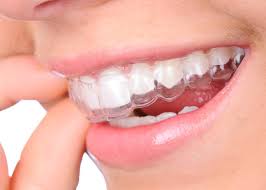What's new in modern orthodontics? - Scottsdale Phoenix AZ | Budd Orthodontics
December 2nd, 2020
Many of us have seen the pictures from many years ago when patients had braces that featured metal bands wrapping around every tooth and headgear was the primary method of treating anyone with an overbite.
Has anything changed in the last 20 years when it comes to orthodontic treatment? The simple answer is YES – most definitely! The list of changes is probably too long to consider in one blog post, but here are just 3 few of the most significant changes to orthodontics in the past few years:
- Prevalence of clear braces options including ceramic braces and Invisalign aligners
- 3D Scanning and printing
- Digital treatment planning and simulations
Invisalign has become a household word as clear aligner therapy has made orthodontic treatment a reality for those unwilling or unable to wear traditional braces. For those patients who are not good candidates for clear aligners, treatment with clear braces has become a popular option as well. These developments have removed the stigma of orthodontic treatment for a lot of patients and made the overall process more enjoyable – especially for adult orthodontic patients.

3D scanning and printing have also made orthodontic treatment a much more pleasant experience for patients. Anyone with a sensitive gag reflex can appreciate the convenience of not having a goopy mouthful of impression material placed in a tray and stuffed into your mouth. 3D scanning and printing has become increasingly more common, and its effect on orthodontists has been significant. Our office has really enjoyed being able to offer this service to our patients using the Itero Digital Scanner which links seamlessly with Invisalign treatment to reduce the time it takes to get aligners manufactured and ready for patient use. In literally about 4 minutes, we can have a complete 3D image of your entire mouth.
In addition, within seconds after the scan is complete, we now have the ability to simulate what your teeth would look like after completing a digital treatment plan simulation. This powerful technology helps patients visualize in real time the potential benefits of orthodontic treatment for each individual patient.
If you live in Phoenix or Scottsdale and are looking for a great orthodontist or just need more information regarding orthodontic treatment, we are here to help. Please call our office at 602-493-3338 or contact us online.












 Website Powered by Sesame 24-7™
Website Powered by Sesame 24-7™